
Business
09:30, 08-Aug-2017
Infographic: Inner Mongolia's economic achievements in 70 years

This year marks the 70th anniversary of the establishment of north China's Inner Mongolia Autonomous Region, the country's first province-level autonomous region.
Over the past 70 years, the economy of the region enjoyed substantial and strong development.
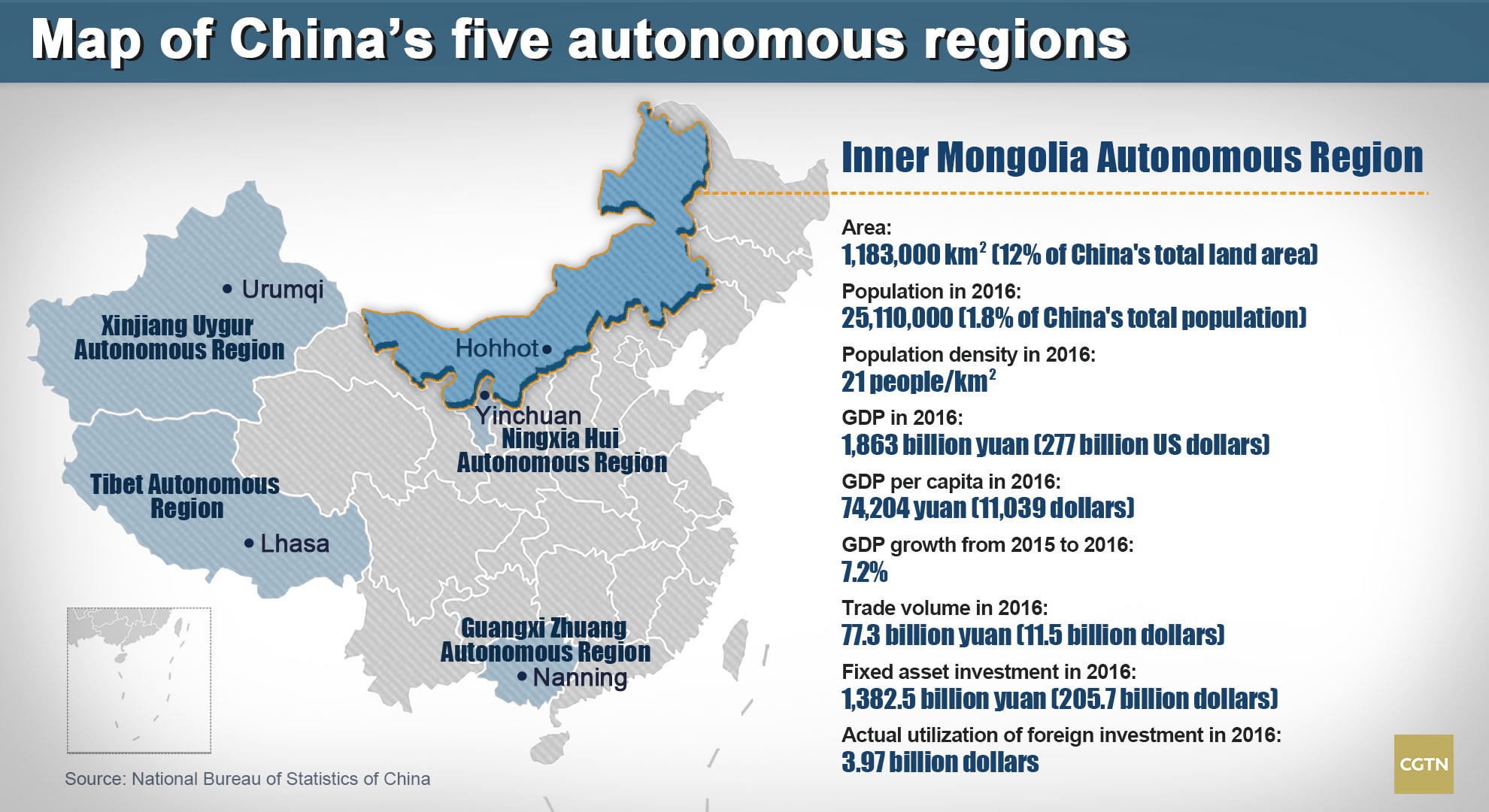
The GDP of Inner Mongolia in 2016 reached 1.86 trillion yuan (277 billion US dollars), a 7.2-percent growth year on year, leading the country's five autonomous regions.

Agriculture
Inner Mongolia stretches across the northern part of China, covering almost one-third of the country's grasslands and about one-fourth of its pasture area. Thanks to their nomadic history and the geographic features of the region, people there are known for their livestock breeding. Last year, the number of livestock on hand throughout the region reached 136 million heads.
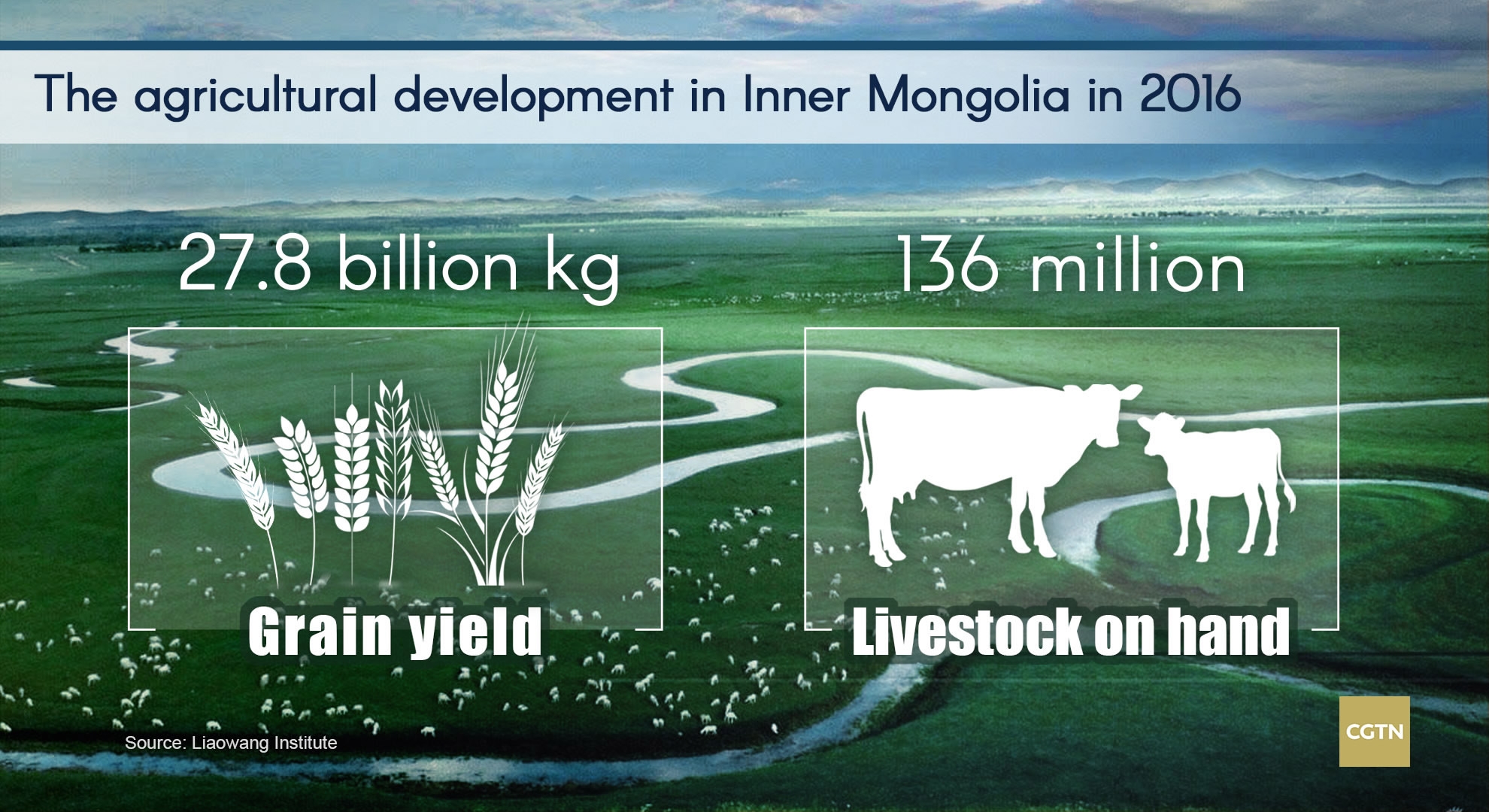
Growing crops has long been concentrated along riverbanks and riverine valleys. In the late 1990s, the traditional agricultural and pastoral industries underwent modernization and mechanization, bringing in higher income for farmers and herdsmen. Gross grain output stood at 27.8 billion kg last year.
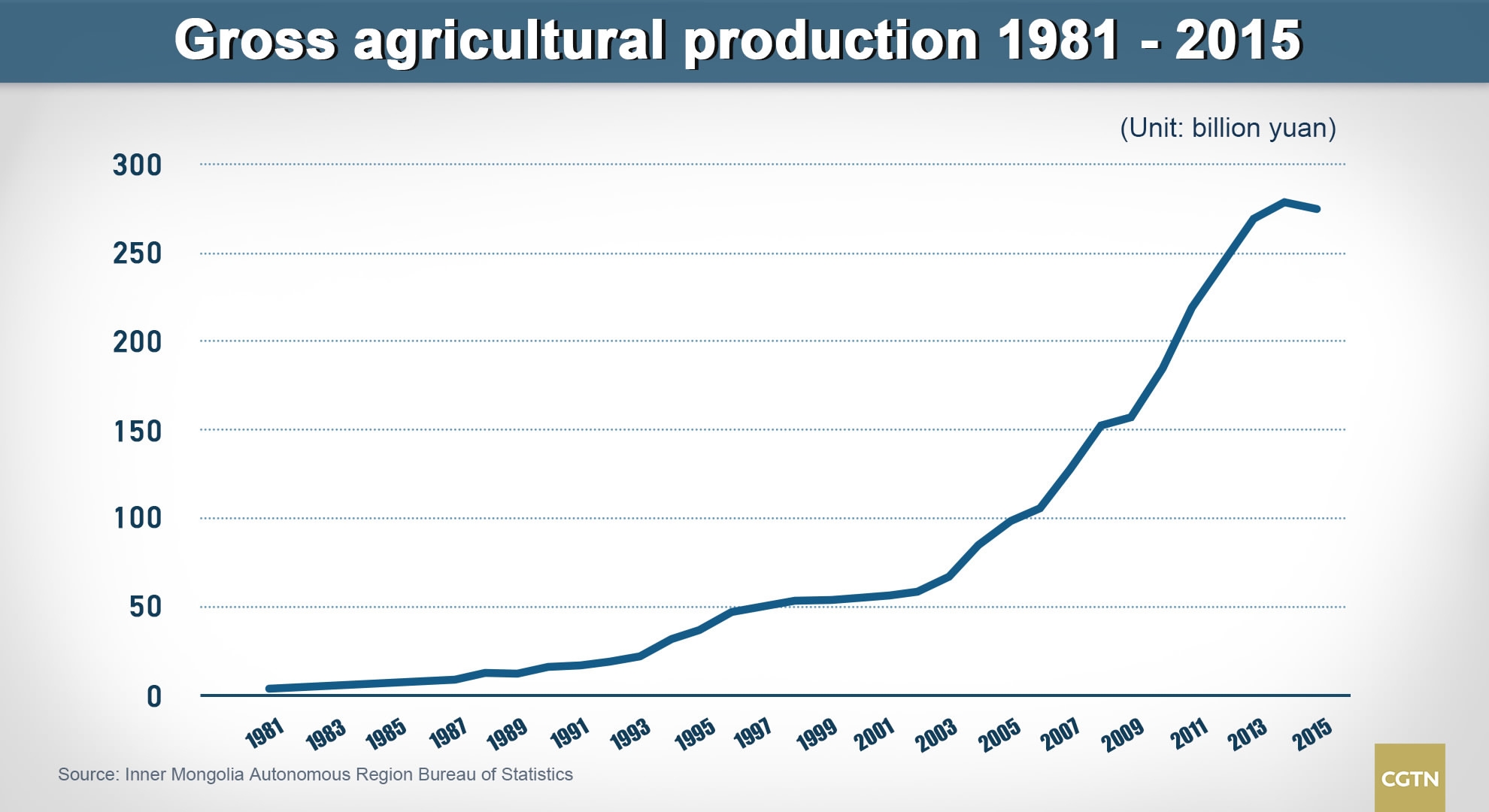
Natural resources and manufacturing
In the past 70 years, the industrial sector made tremendous contributions to the region's overall economy. Industrial output in 2015 was 4,277 times the figure recorded in 1952, according to the Inner Mongolia Autonomous Region Bureau of Statistics.
Inner Mongolia's industry is based on the territory's great and varied mineral wealth. The region is rich in resources such as coal, gas and rare earth metals.
Inner Mongolia has established six competitive industries – energy, metallurgy and building material, chemicals, equipment manufacturing, processing of farm produce and high technology.
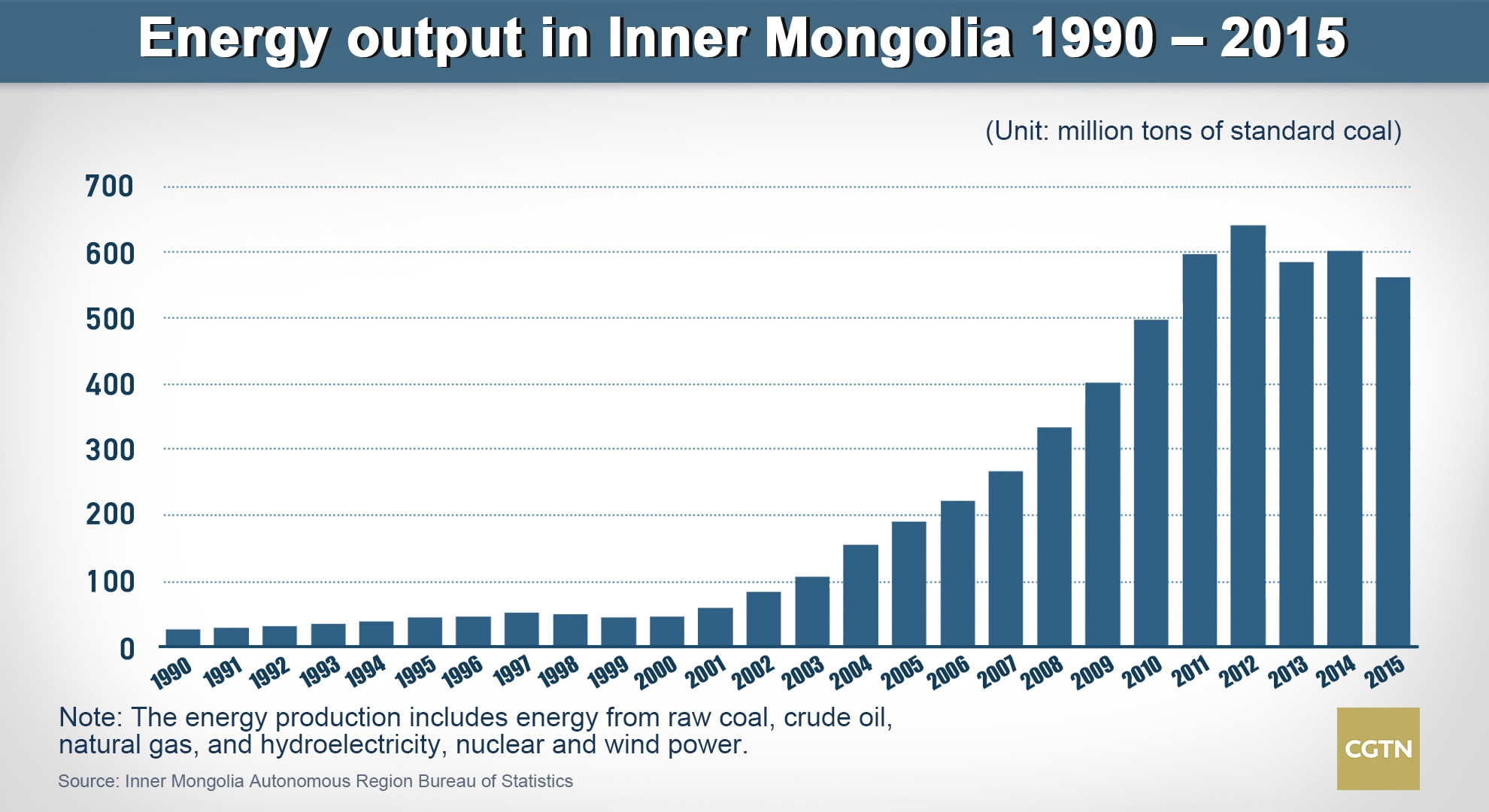
The region ranks first on national level in the production of coal, electricity and wind power. Its coal to liquids (CTL), coal to olefin (CTO) and substitute natural gas (SNG) processes and the industrial scale of rare-earth metals, cloud computing and monocrystalline silicon manufacturing are also leading in their segments across the country.
Transformation of economic structure
During the past seven decades, the economic structure of Inner Mongolia witnessed radical transformation, with tertiary sector increasing its share of the economic pie.
Emerging sectors such as tourism, transportation, financial and delivery services are developing fast, improving the lives of millions.
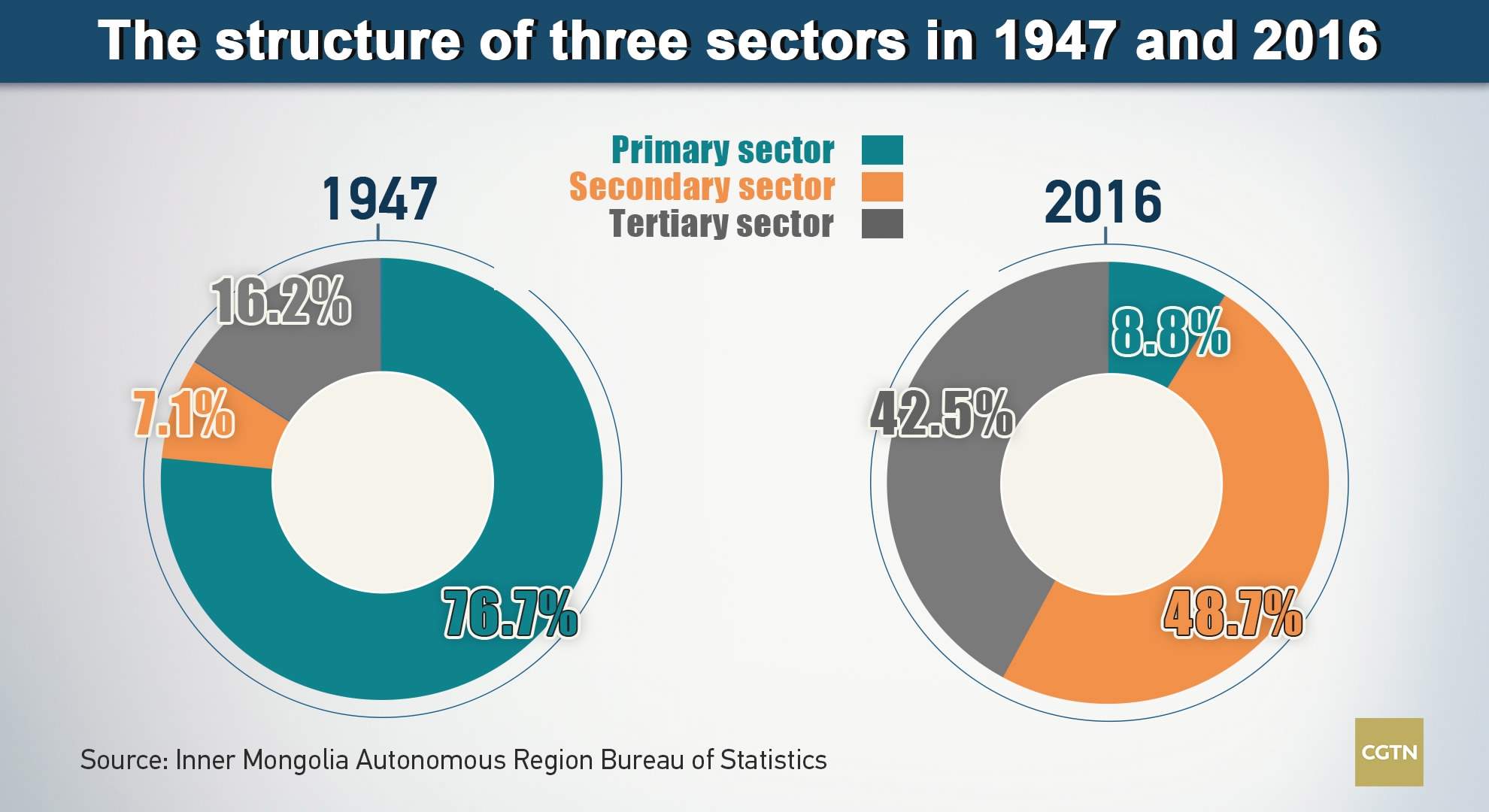
In 1947, the economy of Inner Mongolia was largely dependent on agriculture. In the 1970s, the contribution of the secondary sector to the GDP exceeded that of the primary sector. Energy, raw materials and animal product processing became pillar industries in the secondary sector.
And in recent years, Inner Mongolia shifted its focus to the service sector. The contribution of the tertiary sector to the region's economy has been on the rise. In 2016, it reached its highest, contributing 42.5 percent to Inner Mongolia's GDP.
Emerging industries have injected new vitality into the economy of Inner Mongolia and alleviated the environmental pressure from traditional industries.
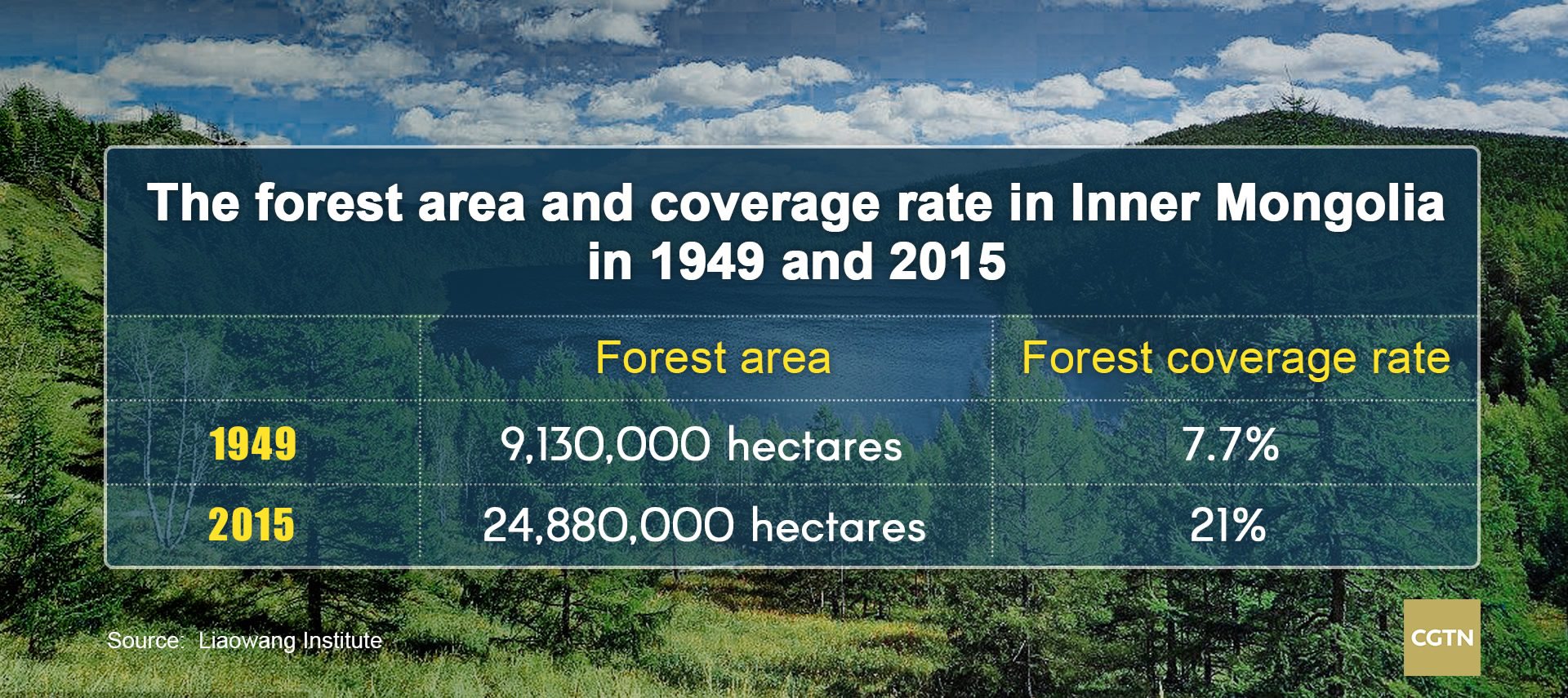
The government has also pursued forestation programs in the region. In 2015, the forest area in Inner Mongolia reached 24.9 million hectares, accounting for 21 percent of the total surface.
415km
Related stories:

SITEMAP
Copyright © 2018 CGTN. Beijing ICP prepared NO.16065310-3
Copyright © 2018 CGTN. Beijing ICP prepared NO.16065310-3